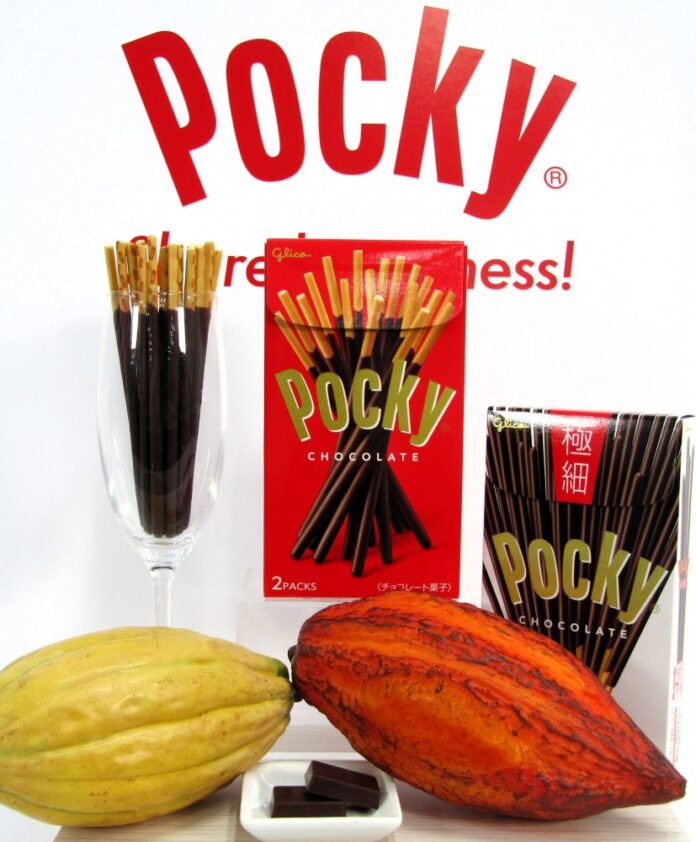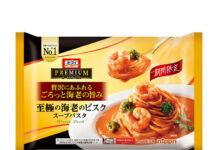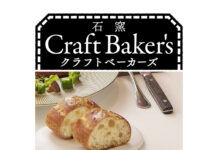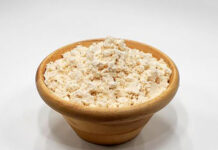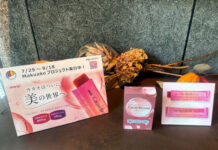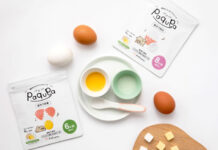Ezaki Glico has undertaken a major renewal of its core products “Pocky Chocolate” and “Pocky Goku Boso (ultra-slim),” both part of the Pocky brand, and launched them on September 2.
In response to consumer demand for safer raw materials, the company explored hundreds of ingredients and conducted hundreds of tests to achieve a taste that maximizes the natural flavors of the ingredients.
Through this large-scale renewal, they aim to further promote sharing of deliciousness and stimulate demand, while refining the long-standing brand message “Share happiness! – Sharing is great!” and enhancing overall brand value.
At a media tasting event held on August 20, Keigo Miura reflected on the renewal, saying, “It took 10 years; throughout this project we went through more trial and error than ever before, and with courage we changed the product’s ingredients.”
As the brand marks its 60th anniversary, the company is also exploring its future direction.
Aoi Suzuki commented, “When we began considering the renewal, we started by reconsidering the concept of ‘Share happiness!’ It’s not only about enjoying moments of fun together, but also about sharing in ways that build deeper ties for each other’s continuous richness, and overcoming differences in backgrounds such as upbringing or generation. Going forward, we want to expand the meaning of ‘Share happiness!’ through these activities.”
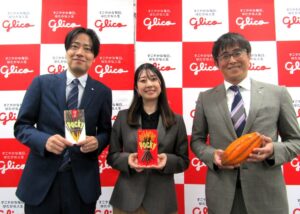
The renewal prioritizes a simple product design centered around cacao.
Instead of the previous two-blend formula, multiple cacao blends were introduced. The company sourced more than 30 types of cacao with different characteristics from various regions, and made careful selection. The key ingredient turned out to be Peruvian cacao, newly procured directly by employees visiting cacao farms in the Amazon rainforest.
Koji Sukimoto from the development team explained, “We believed consumers would find a complex flavor profile more delicious. Peruvian cacao has both a complex aroma and a strong fragrance, and these two qualities became the decisive factors.”
The chocolate-manufacturing process was also overhauled.
When roasting cacao nibs (crushed beans) into cacao mass, Sukimoto noted, “Even a difference of just 1°C in roasting temperature can alter the aroma.” Therefore, they adopted low-temperature roasting to preserve distinctive fragrances.
In the final manufacturing stage, conching, they introduced a new method called “Added Mass Manufacturing,” where part of the cacao mass is added separately.
In general, chocolate manufacturing process involves pressing cacao mass to extract cocoa butter (its fat content), then mixing cacao mass, cocoa butter, sugar, and dairy products. After refining to smooth particles of cacao mass, the mixture undergoes conching to develop flavor.
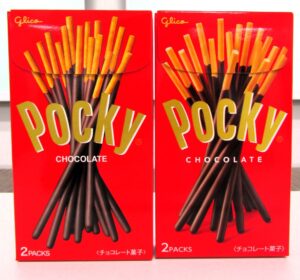
The new “Added Mass Manufacturing” method compensates for aromas lost through heating during conching and enhances the cacao flavor. It has already been used in “Pocky Cacao 60%.
Additionally, “In conventional chocolate, cocoa butter was deodorized and decolorized, but this time we used cocoa butter that retains a rich cacao flavor. For sugar, instead of using only white sugar, we blended sugars with deeper flavor, achieving a more sophisticated taste,” said Sukimoto.
The pretzel component also underwent a full review.
Sukimoto explained, “Previously, we used only strong flour, but now we use a combination of strong flour, coarsely milled wheat, and domestically produced whole wheat flour to bring out depth of flavor and aroma. We also introduced fermented butter, which elevates the biscuit’s base flavor.”
While adding whole wheat flour and fermented butter, the recipe removed shortening, starch, leavening agents, annatto colorant, and flavoring, reducing the number of ingredients from 16 to 13 for a simpler formulation.
As for the combined chocolate and pretzel recipe, “Instead of using leavening agents, we now leaven the dough through yeast fermentation. We re-examined about 100 main ingredients from scratch, including flour, cacao beans, yeast, powdered milk, butter, sugar, and salt. With supplemental ingredients like cocoa butter and spices, we explored several hundred materials overall.”
Prototypes and testing were repeated hundreds of times.
Regarding communication of the product’s renewed value, Aoi Suzuki said, “First, we want to convey to consumers that the product has evolved through careful attention to ingredients. This also makes the product easier to share. We will further promote this idea through tasting campaign trials.”

